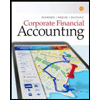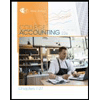
To determine: The number of periods of investment
Introduction:
The
Answer to Problem 5QP
The number of periods is as follows:
| Particulars | Present value | Years | Interest Rate | Future value |
| Investment A | $560 | 15.59 | 6% | $1,389 |
| Investment B | $810 | 9.40 | 9% | $1,821 |
| Investment C | $18,400 | 26.41 | 11% | $289,715 |
| Investment D | $21,500 | 24.52 | 13% | $430,258 |
Explanation of Solution
Given information:
Investment A has a present value of $560, future value of $1,369, and an interest rate of 6 percent. Investment B has a present value of $810, future value of $1,821, and an interest rate of 9 percent.
Investment C has a present value of $18,400, future value of $289,715, and an interest rate of 11 percent. Investment D has a present value of $21,500, future value of $430,258, and an interest rate of 13 percent.
Formula:
Derive the formula to calculate the number of periods from the present value equation as follows:
The formula to calculate the number of periods:
Where,
“t” refers to the number of years or periods of investment
“ln” refers to the log value
“FV” refers to the future value
“PV” refers to the present value
“r” refers to the simple rate of interest
Compute the number of periods for Investment A:
Hence, the number of periods of Investment A is 15.59 years.
Compute the number of periods for Investment B:
Hence, the number of periods of Investment B is 9.40 years.
Compute the number of periods for Investment C:
Hence, the number of periods of Investment C is 26.41 years.
Compute the number of periods for Investment D:
Hence, the number of periods of Investment D is 24.52 years.
Want to see more full solutions like this?
Chapter 5 Solutions
Fundamentals of Corporate Finance
- I need correct answer! Which type of bond offers tax advantages? A) Convertible bonds B) Municipal bonds C) Corporate bonds D) Junk bondsarrow_forwardWhat is the main purpose of budgeting in a company? A) To eliminate all expensesB) To forecast and control costsC) To increase revenueD) To reduce taxes i need correct answer!!arrow_forward2. A 'competitive advantage' means:A. A company has lower prices than its competitorsB. A company has a unique product or service that gives it an edgeC. A company offers the same product as its competitorsD. A company has the largest market sharearrow_forward
- Which type of bond offers tax advantages? A) Convertible bondsB) Municipal bondsC) Corporate bondsD) Junk bondsneed help!arrow_forwardWhich type of bond offers tax advantages? A) Convertible bondsB) Municipal bondsC) Corporate bondsD) Junk bondsarrow_forwardWhat does "liquidity" refer to in finance? A) The profitability of a companyB) The ease of converting assets to cashC) The value of fixed assetsD) The number of outstanding shares i need answer.arrow_forward
- No chatgpt! What does "liquidity" refer to in finance? A) The profitability of a companyB) The ease of converting assets to cashC) The value of fixed assetsD) The number of outstanding sharesarrow_forwardWhat is the main purpose of budgeting in a company? A) To eliminate all expensesB) To forecast and control costsC) To increase revenueD) To reduce taxesarrow_forwardWhat does "liquidity" refer to in finance? A) The profitability of a companyB) The ease of converting assets to cashC) The value of fixed assetsD) The number of outstanding sharesarrow_forward
- I need answer in this problem quickly. The Weighted Average Cost of Capital (WACC) includes: A) Cost of equity and cost of debtB) Only the cost of equityC) Only the cost of debtD) Total revenue of the companyarrow_forwardHelp me in this question. The Weighted Average Cost of Capital (WACC) includes: A) Cost of equity and cost of debtB) Only the cost of equityC) Only the cost of debtD) Total revenue of the companyarrow_forwardNeed answer! The Weighted Average Cost of Capital (WACC) includes: A) Cost of equity and cost of debtB) Only the cost of equityC) Only the cost of debt D) Total revenue of the companyarrow_forward
 Corporate Financial AccountingAccountingISBN:9781305653535Author:Carl Warren, James M. Reeve, Jonathan DuchacPublisher:Cengage Learning
Corporate Financial AccountingAccountingISBN:9781305653535Author:Carl Warren, James M. Reeve, Jonathan DuchacPublisher:Cengage Learning Essentials of Business Analytics (MindTap Course ...StatisticsISBN:9781305627734Author:Jeffrey D. Camm, James J. Cochran, Michael J. Fry, Jeffrey W. Ohlmann, David R. AndersonPublisher:Cengage Learning
Essentials of Business Analytics (MindTap Course ...StatisticsISBN:9781305627734Author:Jeffrey D. Camm, James J. Cochran, Michael J. Fry, Jeffrey W. Ohlmann, David R. AndersonPublisher:Cengage Learning College Accounting, Chapters 1-27 (New in Account...AccountingISBN:9781305666160Author:James A. Heintz, Robert W. ParryPublisher:Cengage Learning
College Accounting, Chapters 1-27 (New in Account...AccountingISBN:9781305666160Author:James A. Heintz, Robert W. ParryPublisher:Cengage Learning


